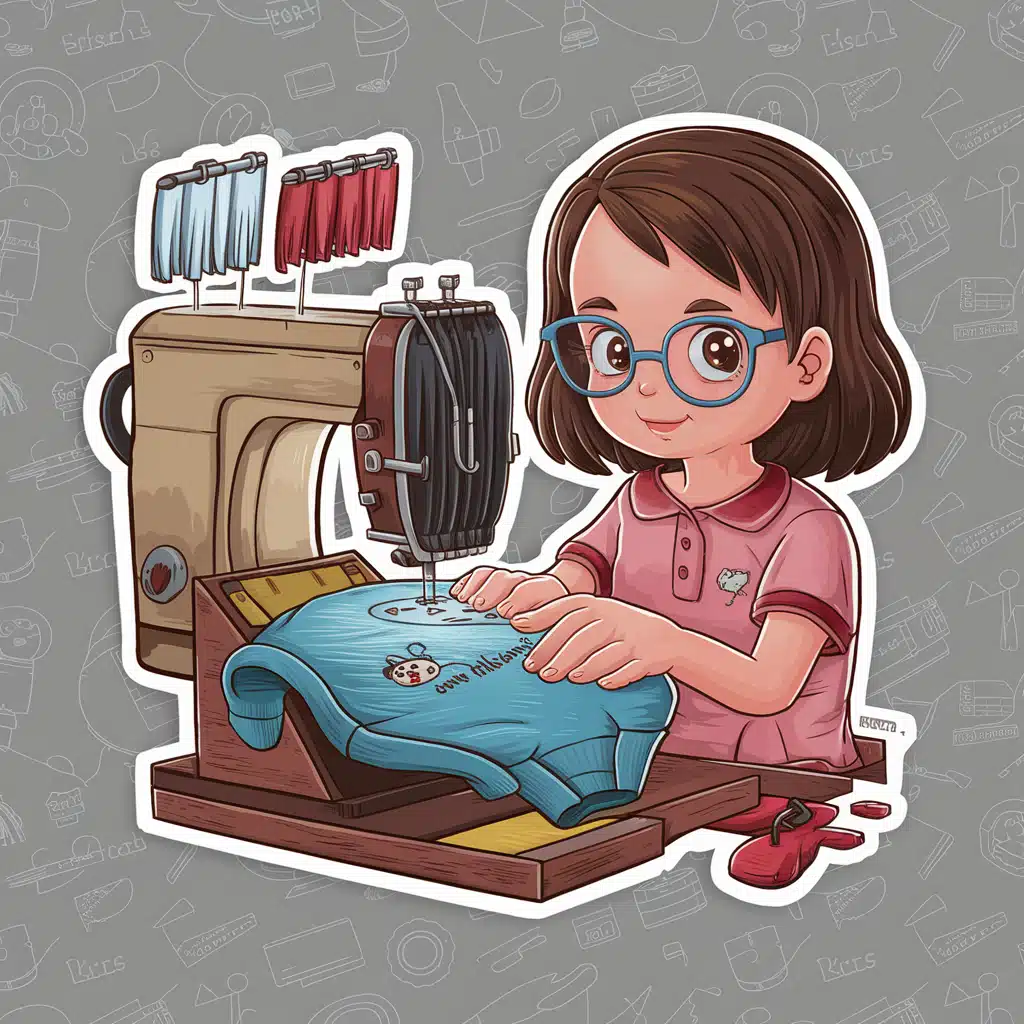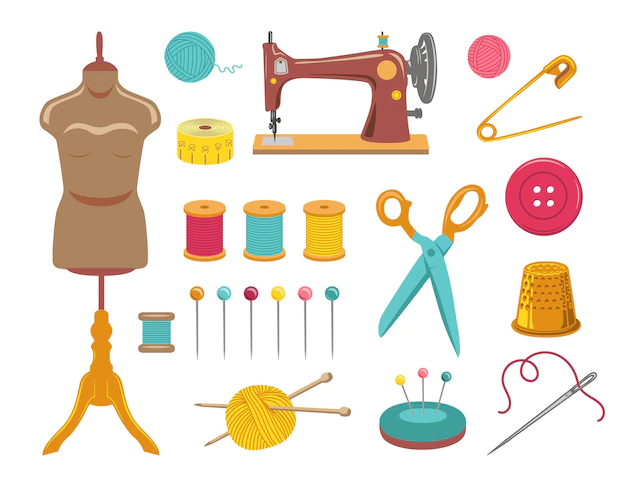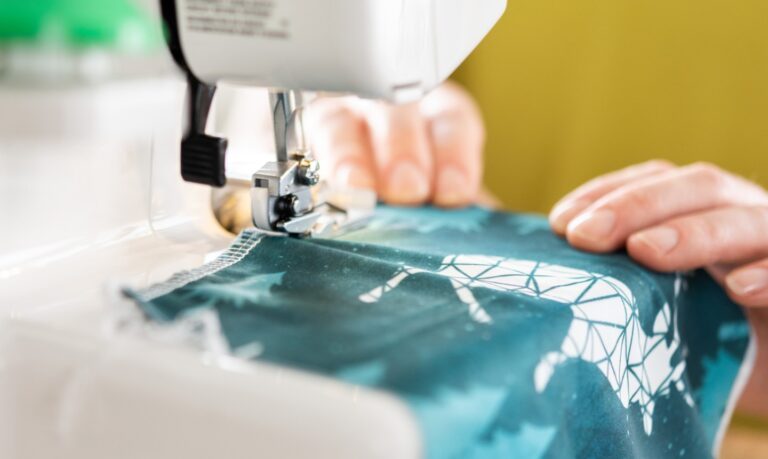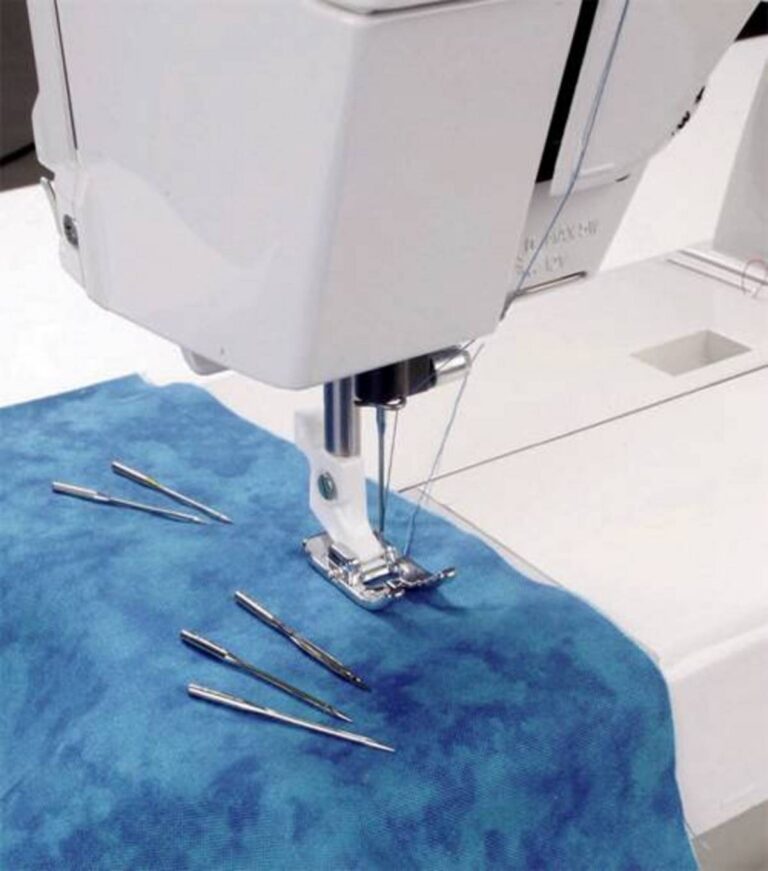Mastering Tension: A Beginner’s Guide to Perfect Stitches with Your Sewing Machine
Understanding and mastering sewing machine tension is crucial for achieving professional-looking results in your sewing projects.
Whether you’re a novice seamstress or looking to refine your skills, this comprehensive guide will help you navigate the sometimes tricky world of tension adjustment.
Let’s dive into the essentials of creating perfect stitches every time you sit down at your sewing machine.
Understanding Sewing Machine Tension
Before we delve into adjustment techniques, it’s important to understand what tension is and how it affects your stitches:
-
What is Sewing Machine Tension?
Tension refers to the amount of restriction placed on the thread as it passes through your machine.
Proper tension ensures that the upper thread and bobbin thread interlock smoothly in the middle of the fabric layers, creating even, balanced stitches.
-
Upper Thread Tension vs. Bobbin Tension
- Upper Thread Tension: Controlled by the tension dial on the front of your machine.
- Bobbin Tension: Usually pre-set and rarely needs adjustment.
-
The Importance of Balanced Tension
Balanced tension results in stitches that look identical on both sides of the fabric.
The threads should meet in the middle of the fabric layers, with no loops on either side.
Identifying Tension Issues
Recognizing tension problems is the first step in achieving perfect stitches:
- Upper Tension Too Tight
- Appearance: Lower thread is pulled to the top of the fabric.
- Result: Puckered fabric and potential thread breakage.
- Upper Tension Too Loose
- Appearance: Upper thread forms loops on the underside of the fabric.
- Result: Weak seams and potential snagging.
- Bobbin Tension Issues
- Appearance: Inconsistent stitches or bird’s nests of thread on the underside.
- Result: Uneven seams and frustration!
Adjusting Sewing Machine Tension
Now that we can identify tension problems, let’s explore how to fix them:
- Start with the Upper Tension
- Locate the tension dial on your machine (usually numbered from 0 to 9).
- The default setting is typically around 4 or 5.
- Adjust in small increments, testing on scrap fabric after each change.
- When to Adjust Bobbin Tension
- Only adjust bobbin tension if upper tension adjustments don’t solve the issue.
- Consult your machine’s manual for specific instructions, as this process varies by model.
- Step-by-Step Tension Adjustment
a) Thread your machine correctly.
b) Set the upper tension to the middle setting (usually 4 or 5).
c) Sew a test line on doubled scrap fabric similar to your project fabric.
d) Examine both sides of the stitching.
e) If upper thread is visible on the bottom, decrease upper tension.
f) If bobbin thread is visible on top, increase upper tension.
g) Make small adjustments and test again until stitches are balanced.
Factors Affecting Tension
Several factors can influence your machine’s tension settings:
- Fabric Type and Weight
- Lightweight fabrics generally require less tension.
- Heavy fabrics may need higher tension settings.
- Thread Type and Weight
- Thicker threads often need less tension.
- Specialty threads (like metallic) may require tension adjustments.
- Needle Size and Type
- Ensure you’re using the correct needle for your fabric and thread.
- A needle that’s too small can cause tension issues.
- Multiple Fabric Layers
- Adjust tension when sewing through varying numbers of layers.
- Very fast sewing can sometimes affect tension, especially with delicate fabrics.
Tips for Perfect Tension Every Time
Follow these tips to maintain ideal tension in your sewing projects:
- Use Quality Thread
- Low-quality thread can cause inconsistent tension and breakage.
- Clean Your Machine Regularly
- Lint and debris can affect tension. Clean after every project.
- Check Threading
- Incorrect threading is a common cause of tension issues.
- Use the Right Needle
- Match your needle to your fabric and thread for best results.
- Test on Scrap Fabric
- Always test your tension on scraps before starting your project.
- Adjust for Different Fabrics
- Be prepared to change tension when switching between fabric types.
- Keep a Tension Log
- Note successful tension settings for different fabric/thread combinations.
Troubleshooting Common Tension Problems
Even with careful adjustment, you may encounter these common issues:
- Skipped Stitches
- Cause: Often related to needle issues rather than tension.
- Solution: Change to a new, appropriate-sized needle.
- Thread Bunching Under Fabric
- Cause: Incorrect threading or bobbin insertion.
- Solution: Rethread machine and check bobbin placement.
- Wavy Seams
- Cause: Uneven feeding or incorrect presser foot pressure.
- Solution: Adjust presser foot pressure or use a walking foot.
- Cause: Tension too tight or poor-quality thread.
- Solution: Loosen tension slightly or switch to higher-quality thread.
Advanced Tension Techniques
As you become more comfortable with basic tension adjustment, consider these advanced techniques:
- Adjusting for Decorative Stitches
- Decorative stitches often require looser upper tension.
- Test and adjust for each decorative stitch type.
- Working with Multiple Threads
- When using different threads in the needle and bobbin, you may need to adjust tension to accommodate both.
- Tension for Free-Motion Quilting
- Generally requires slightly looser tension to allow for the movement of the fabric.
- Micro-Adjusting Bobbin Tension
- For precise projects, learn to make minor adjustments to bobbin tension using the bobbin case screw.
Understanding and mastering sewing machine tension is a skill that will dramatically improve the quality of your sewing projects.
With practice and patience, you’ll develop an intuitive sense of how to achieve perfect stitches on any fabric.
Remember, every sewing machine is unique, so take the time to get to know your machine’s quirks and capabilities.
By following this guide and consistently practicing tension adjustment, you’ll be well on your way to creating professional-looking stitches every time you sew.
Don’t be discouraged if it takes some time to get it right – mastering tension is a journey that even experienced sewists continually refine.
FAQ Section:
Q1: Why is my thread bunching up under the fabric?
A1: Thread bunching, or “bird’s nesting,” is often caused by incorrect upper threading or bobbin insertion. Rethread your machine and ensure the bobbin is correctly placed and threaded.
Q2: How often should I adjust the tension on my sewing machine?
A2: You should check and potentially adjust tension whenever you change fabric type, thread type, or start a new project. It’s also a good idea to test tension after cleaning or servicing your machine.
Q3: Can I adjust the bobbin tension on my sewing machine?
A3: While it’s possible on most machines, bobbin tension adjustment should be a last resort. Always try adjusting the upper tension first. If you must adjust bobbin tension, consult your machine’s manual for specific instructions.
Q4: Why do I need to adjust tension for different fabrics?
A4: Different fabrics have varying thicknesses and textures, which affect how the thread moves through them. Adjusting tension ensures that the threads lock properly within the fabric layers, regardless of the material’s characteristics.
Q5: My stitches look fine on top but are loopy underneath. What’s wrong?
A5: This typically indicates that the upper tension is too loose. Try increasing the upper tension slightly and test on scrap fabric until the stitches are balanced on both sides.
Remember, achieving perfect tension is a skill that improves with practice.
Don’t hesitate to experiment with different settings on scrap fabric to gain confidence in adjusting your machine’s tension for various sewing scenarios.
Related Posts
Discover relevant articles, tutorials, and tips to improve your skills and explore new techniques.
Stay inspired and connected to our embroidery community.






